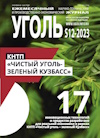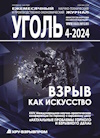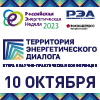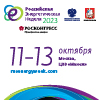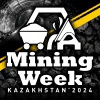
SAFETY
Original Paper
UDC 532.593 © A.Yu. Kraynov, A.Yu. Lukashov, O.Yu., Moiseeva, K.M., Kolegov G.A., 2022
ISSN 0041-5790 (Print) • ISSN 2412-8333 (Online) • Ugol’ – Russian Coal Journal, 2022, № 9, pp. 73-78
DOI: http://dx.doi.org/10.18796/0041-5790-2022-9-73-38
Title
EFFECT OF COAL DUST COMBUSTION ON SHOCKWAVE INTENSITY OF A METHANE EXPLOSION IN AN UNDERGROUND MINE
Author
Kraynov A.Yu1, Lukashov O.Yu.2, Moiseeva K.M.1, Kolegov G.F.1
1National Research Тomsk State University, Tomsk, 634050, Russian Federation
2Shakhtekspert-Sistemy LLC, Kemerovo, 650065, Russian Federation
Authors Information
Kraynov A.Yu., Head of the Department of Mathematical Physics, e-mail: akrainov@ftf.tsu.ru
Lukashov O.Yu., Director, e-mail: olukashov@gmail.com
Moiseeva K.M.,Associate Professor of the Department of Mathematical Physics, e-mail: moiseeva_km@t-sk.ru
Kolegov G.A., Graduate Student of the Department of Mathematical Physics, e-mail: zergferr@gmail.com
Abstract
Coal dust is always present in coal mines and is a source of increased fire danger. The issue of the effect of coal dust combustion on explosion-proof distances at the risk of an emergency methane explosion has not been resolved. The article presents the results of a computational and theoretical analysis of the effect of flame propagation through the gas suspension of coal dust raised from the walls of the workings during the passage of a shock wave from an emergency explosion of methane in the preparatory development. The variants when the water barriers installed in the preparatory workings worked or did not work are analyzed. It is established that when the combustion front propagates through the coal dust gas suspension after the methane explosion, an increased pressure is maintained behind the shock wave. The shock wave has intensity slightly greater than in the case when coal dust does not burn. Water barriers provide a significant reduction in the intensity of the shock wave. The proposed approach can be useful for practical application in analyzing the effect of coal dust combustion on the intensity of the shock wave in coal mines during emergency methane explosions.
Keywords
Emergency explosion of methane, Shock wave, Combustion of coal dust gas suspension, Water barriers, Numerical modeling.
References
1. Pinaev A.V. & Pinaev P.A. Studies of comparative chemical activity of methane and airborne coal particles during combustion, explosion and detonation. Vestnik Nauchnogo centra VostNII po promyshlennoj i ekologicheskoj bezopasnosti, 2019, (4), pp. 5-16. (In Russ.).
2. Pinaev A.V. & Pinaev P.A. Combustion and detonation waves in H4/Air, CH4/O2, O2 gas mixtures with air-born hard coal particles. Fizika goreniya i vzryva, 2020, Vol. 56, (6), pp. 56-68. (In Russ.).
3. Leilin Zhang, Qianyi Yang, Biming Shi, Yihui Niu & Zheng Zhong. Influences of a Pipeline’s Bending Angle on the Propagation Law of Coal Dust Explosion Induced by Gas Explosion. Combustion Science and Technology, 2021, Vol. 193, (5), pp. 798-811.
4. Yihui Niu, Leilin Zhang, Biming Shi, Qianyi Yang & Zhen Zhong. Methane–Coal Dust Mixed Explosion in Transversal Pipe Networks. Combustion Science and Technology, 2021, Vol. 193, (10), pp. 1734-1746.
5. Shang-Hao Liu, Yang-Fan Cheng, Xiang-Rui Meng, Hong-Hao Ma, Shi-Xiang Song, Wen-Jin Liu & Zhao-Wu Shen. Influence of particle size polydispersity on coal dust explosibility. Journal of Loss Prevention in the Process Industries, 2018, (56), pp. 444-450.
6. Charter of the paramilitary mine rescue unit for organization and execution of mine rescue work in operations of the coal and oil shale industries. Moscow, 1997, 201 p. (In Russ.).
7. Vasenin I.M., Schrager E.R., Kraynov A.Yu., Lukashov O.Yu. et al. Mathematical modelling of combustion and explosion of high-energy systems. Tomsk, Tomsk University Publ., 2006, 322 p. (In Russ.).
8. Paleyev D.Yu., Lukashov O.Yu., Vasenin I.M. et al. Modelling of shock wave propagation from explosion and combustion of a gas-dust mixture in coal mines. Naukoemkie tehnologii razrabotki i ispol?zovaniya mineral?nyh resursov, 2017, (3), pp. 371-377. (In Russ.).
9. Paleyev D.Yu., Vasenin I.M., Kosterenko V.N., Shrager E.R. et al. Shock waves during explosions in coal mines. Moscow, Gornoe Delo Publ., Cimmerian Centre LLC, 2011, 312 p. (In Russ.).
10. Fundamentals of practical combustion theory: A training manual for higher education institutions, Leningrad: Energoatomizdat Publ., 1986, 312 p. (In Russ.).
11. Krishenik P. M., Rumanov E. N. & Shkadinskii K. G. Modeling of combustion wave propagation in a carbon dust/gas mixture. Combustion and flame, 1994, (99), pp. 713-722.
12. Lukashov O.Yu., Paleyev D.Yu. & Kraynov A.Yu. Registration Certificate for Computer Software No. 2015616516. “Shock Wave”, Right holder: Shakhtekspert-Sistemy LLC (RU). Applic No. 2015613051 dated 17.04.2015; publ. 11.06.2015.
Acknowledgements
This work was financially supported by the Russian Science Foundation, Project No. 21-71-10034
For citation
Kraynov A.Yu., Lukashov O.Yu., Moiseeva K.M., Kolegov G.A. Effect of coal dust combustion on shockwave intensity of a methane explosion in an underground mine. Ugol’, 2022, (9), pp. 73-78. (In Russ.). DOI: 10.18796/0041-5790-2022-9-73-78.
Paper info
Received May 16, 2022
Reviewed July 28, 2022
Accepted August 25, 2022


